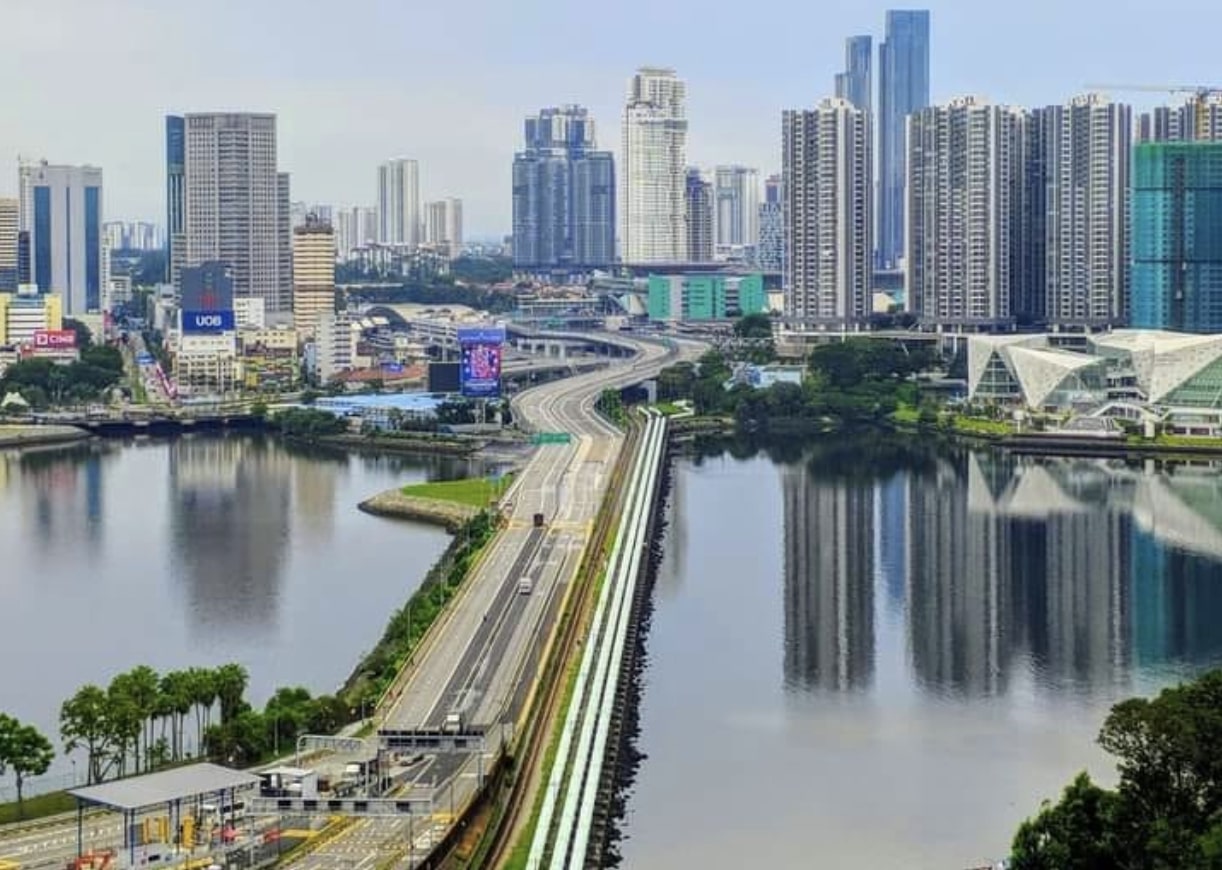SINGAPORE: The Johor-Singapore Causeway, over a century old, is one of the busiest land crossings in the world.
About 300,000 people cross it daily by vehicle, train, or on foot. With traffic expected to rise by 40% by 2050, Singapore and Malaysia have explored plans to ease congestion as the volume on the Causeway surges.
Currently, the middle of the Causeway consists of six vehicle lanes, with immigration booths handling border checks. Meanwhile, pedestrians cross on foot by the pavement along the road.
According to Channel News Asia, more car lanes, an air-conditioned pedestrian travelator, and electronic toll gantries may be implemented to facilitate smoother traffic flow.
An expert also suggested that more ferry services and a cable car network could help divert traffic from the Causeway.
Singapore’s plans for expansion
Singapore authorities have shared plans to expand the Woodlands Checkpoint (WCP) over the next 10 to 15 years, which will involve demolishing the Old Woodlands Checkpoint and nearby residential areas.
This will make it five times larger than its current size. Nearly double the number of car immigration booths (78) will be added, up from the current 40. For cargo vehicles, 21 more bi-directional cargo booths will be built, up from the current 16.
The expansion is expected to be completed by 2032.
Malaysia’s plans to manage congestion
In Malaysia, Johor’s director for Bangunan Sultan Iskandar (BSI), Mohd Faizal Shamsuddin, said that QR code scanners would be introduced for passport-free travel, and more e-gates will be available for travellers from “low-risk” countries, including the EU, Jordan, China, Qatar, Hong Kong, and Taiwan, as reported by Channel News Asia.
A new pedestrian walkway from Hako Hotel to BSI is also being planned, as well as 25 additional motorcycle booths at both BSI entrances and exits. There are also plans for an air-conditioned travelator for pedestrians crossing the Causeway.
Experts suggestions on easing congestion in the Causeway
Transport experts have also suggested other measures to ease congestion. Johor state assemblyman Andrew Chen suggested a single-point clearance system where travellers would clear immigration for both countries at the departure point.
This system is already used at the Johor Bahru-Singapore Rapid Transit System (RTS) Link.
“When the traveller is given the green light by both countries’ systems to clear, they will be verified and free to go,” said Mr Chen, who led a task force addressing Causeway congestion between 2018 and 2020.
However, some experts, such as transport economics specialist Walter Theseira, pointed out that increasing immigration booths may not solve the physical capacity problem (up to 20,000 vehicles per hour in one direction during peak times), as the Causeway only has three lanes in either direction.
According to Mr Theseira, even with improvements in processing, it’s still impossible to physically move too many vehicles through the link.
He said, “It’s acceptable for most of the week, but on public holidays, on those occasions when everybody wants (to travel), that is just not going to work.”
Mr Theseira also suggested implementing a toll schedule to help manage traffic more efficiently. This would involve higher tolls during peak periods, such as weekends and certain weekdays when there’s more traffic.
He said the goal would be to divert traffic away from the busiest times, potentially encouraging drivers to use alternatives like the Tuas Second Link.
Transport experts believe this could be done using electronic toll gantries on the Causeway, similar to the Electronic Road Pricing system used on Singapore highways. At these gantries, drivers would be charged tolls automatically, with the cost varying depending on the time of day.
Other transport options
Experts also proposed other transport options to ease the strain on the Causeway.
Rosli Azad Khan, a transport planning expert at MDS consultancy, suggested increasing ferry services, especially between Changi and Pasir Gudang on the east side.
He recommended offering affordable ferry options for passengers with motorcycles, encouraging Malaysians working in Singapore to use them.
Mr Khan also suggested a cable car network linking high-rise points on both sides of the Causeway. He believes these solutions, alongside the upcoming RTS Link by the end of 2026, would help divert traffic from the Causeway and improve the travel experience for everyone. /TISG
Read also: Delay in Johor-Singapore SEZ deal sparks uncertainty for SMEs’ growth and investment plans
Featured image by Depositphotos (for illustration purposes only)

